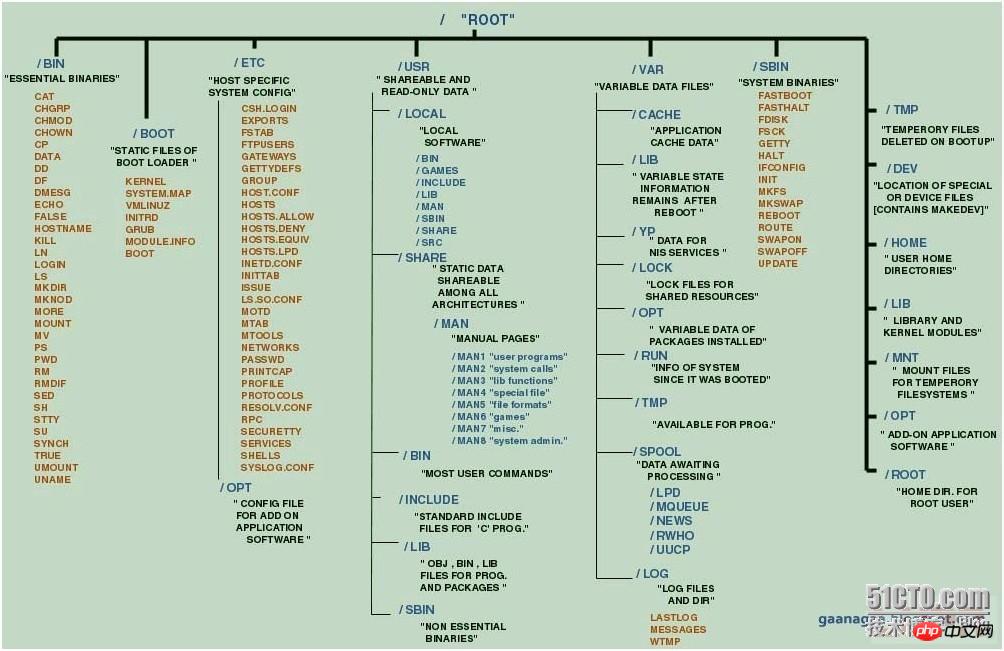linux系統(tǒng)的編譯命令是“Make”。在linux系統(tǒng)中,make是一個(gè)非常重要的編譯命令,管理員用它通過命令行來編譯和安裝很多開源的工具,程序員用它來管理他們大型復(fù)雜的項(xiàng)目編譯問題。Make被用于自動(dòng)化編譯大型程序的任務(wù),它可以自動(dòng)檢測(cè)程序中需要重新編譯的部分,并下發(fā)相應(yīng)的編譯指令。
Make簡(jiǎn)介
make 是 linux 系統(tǒng)的實(shí)用程序。它被用來管理大型程序的自動(dòng)編譯任務(wù),自動(dòng)判斷程序的哪個(gè)部分需要重新編譯,并發(fā)送編譯指令。雖然,我們最常見于 C 語言程序的編譯。但是,make 不限于某一特定語言,凡是可以通過 shell 命令來運(yùn)行編譯器的語言都可以使用 make 。除此之外,你甚至可以用 make 描述任何構(gòu)建任務(wù),這些任務(wù)中,文件需要在其依賴的文件發(fā)生變動(dòng)后自動(dòng)更新。
Make 如何工作的
Make 命令對(duì)于不熟悉其背后機(jī)理的人來說,就像命令行參數(shù)一樣接受目標(biāo)。通常,這些操作被存儲(chǔ)在名為“Makefile”的特殊文件中,并且與目標(biāo)相對(duì)應(yīng)。更多信息,閱讀關(guān)于 Makefiles 如何工作的系列文章。
Make命令在第一次執(zhí)行時(shí),會(huì)掃描Makefile以查找目標(biāo)和相應(yīng)的依賴關(guān)系。如果這些依賴項(xiàng)也需要被編譯成目標(biāo),就要繼續(xù)掃描 Makefile 并建立它們的依賴關(guān)系,接著進(jìn)行編譯。一旦主要依賴項(xiàng)完成編譯,就會(huì)編譯主目標(biāo)(這是通過make命令輸入的)。
現(xiàn)在,假設(shè)你對(duì)某個(gè)源文件進(jìn)行了修改,你再次執(zhí)行 make 命令,它將只編譯與該源文件相關(guān)的目標(biāo)文件,因此,編譯完最終的可執(zhí)行文件節(jié)省了大量的時(shí)間。
>Make 命令實(shí)例
下面是本文所使用的測(cè)試環(huán)境:
OS?——?Ubunut?13.04 Shell?——?Bash?4.2.45 Application?——?GNU?Make?3.81
下面是工程的內(nèi)容:
$ ls anotherTest.c Makefile test.c test.h
下面是 Makefile 的內(nèi)容:
all: test test: test.o anotherTest.o ? ?gcc -Wall test.o anotherTest.o -o testtest.o: test.c ? ?gcc -c -Wall test.c anotherTest.o: anotherTest.c ? ?gcc -c -Wall anotherTest.c clean: ? ?rm -rf *.o test
現(xiàn)在我們來看 Linux 下一些 make 命令應(yīng)用的實(shí)例:
1. 一個(gè)簡(jiǎn)單的例子
為了編譯整個(gè)工程,你可以簡(jiǎn)單的使用 make 或者在 make 命令后帶上目標(biāo) all。
$ make gcc -c -Wall test.c gcc -c -Wall anotherTest.c gcc -Wall test.o anotherTest.o -o test
你能看到 make 命令第一次創(chuàng)建的依賴以及實(shí)際的目標(biāo)。
如果你再次查看目錄內(nèi)容,里面多了一些 .o 文件和執(zhí)行文件:
$ ls anotherTest.c anotherTest.o Makefile test test.c test.h test.o
現(xiàn)在,假設(shè)你對(duì) test.c 文件做了一些修改,重新使用 make 編譯工程:
$ make gcc -c -Wall test.c gcc -Wall test.o anotherTest.o -o test
你可以看到只有 test.o 重新編譯了,然而另一個(gè) Test.o 沒有重新編譯。
現(xiàn)在清理所有的目標(biāo)文件和可執(zhí)行文件 test,你可以使用目標(biāo) clean:
$ make clean rm -rf *.o test$ ls anotherTest.c Makefile test.c test.h
你可以看到所有的 .o 文件和執(zhí)行文件 test 都被刪除了。
2. 通過 -B 選項(xiàng)讓所有目標(biāo)總是重新建立
到目前為止,你可能注意到 make 命令不會(huì)編譯那些自從上次編譯之后就沒有更改的文件,但是,如果你想覆蓋 make 這種默認(rèn)的行為,你可以使用 -B 選項(xiàng)。
下面是個(gè)例子:
$ make make: Nothing to be done for `all’.$ make -B gcc -c -Wall test.c gcc -c -Wall anotherTest.c gcc -Wall test.o anotherTest.o -o test
你可以看到盡管 make 命令不會(huì)編譯任何文件,然而 make -B 會(huì)強(qiáng)制編譯所有的目標(biāo)文件以及最終的執(zhí)行文件。
3. 使用 -d 選項(xiàng)打印調(diào)試信息
如果你想知道 make 執(zhí)行時(shí)實(shí)際做了什么,使用 -d 選項(xiàng)。
這是一個(gè)例子:
$ make -d | more GNU Make 3.81 Copyright (C) 2006 Free Software Foundation, Inc. This is free software; see the source for copying conditions. There is NO warranty; not even for MERCHANTABILITY or FITNESS FOR A PARTICULAR PURPOSE. This program built for x86_64-pc-linux-gnu Reading makefiles… Reading makefile `Makefile’… Updating makefiles…. Considering target file `Makefile’. Looking for an implicit rule for `Makefile’. Trying pattern rule with stem `Makefile’. Trying implicit prerequisite `Makefile.o’. Trying pattern rule with stem `Makefile’. Trying implicit prerequisite `Makefile.c’. Trying pattern rule with stem `Makefile’. Trying implicit prerequisite `Makefile.cc’. Trying pattern rule with stem `Makefile’. Trying implicit prerequisite `Makefile.C’. Trying pattern rule with stem `Makefile’. Trying implicit prerequisite `Makefile.cpp’. Trying pattern rule with stem `Makefile’. --More--
這是很長(zhǎng)的輸出,你也看到我使用了 more 命令來一頁一頁顯示輸出。
4. 使用 -C 選項(xiàng)改變目錄
你可以為 make 命令提供不同的目錄路徑,在尋找 Makefile 之前會(huì)切換目錄的。
這是一個(gè)目錄,假設(shè)你就在當(dāng)前目錄下:
$?ls? file?file2?frnd?frnd1.cpp?log1.txt?log3.txt?log5.txt file1?file?name?with?spaces?frnd1?frnd.cpp?log2.txt?log4.txt
但是你想運(yùn)行的 make 命令的 Makefile 文件保存在 ../make-dir/ 目錄下,你可以這樣做:
$ make -C ../make-dir/ make: Entering directory `/home/himanshu/practice/make-dir’ make: Nothing to be done for `all’. make: Leaving directory `/home/himanshu/practice/make-dir
你能看到 make 命令首先切到特定的目錄下,在那執(zhí)行,然后再切換回來。
5. 通過 -f 選項(xiàng)將其它文件看作 Makefile
如果你想將重命名 Makefile 文件,比如取名為 my_makefile 或者其它的名字,我們想讓 make 將它也當(dāng)成 Makefile,可以使用 -f 選項(xiàng)。
make?-f?my_makefile
通過這種方法,make 命令會(huì)選擇掃描 my_makefile 來代替 Makefile。
.jpg)

















.png)
